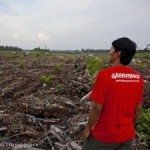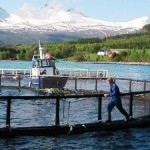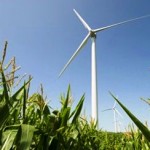 Cincinnati – The Procter & Gamble Company (NYSE:PG) on October 12 released its 2011 Sustainability Report titled “Commitment to Everyday Life”. The report outlines P&G’s global progress over the last year in decreasing the environmental footprint of products and operations, fulfilling social responsibility commitments and delivering sustainable product innovations to the market.
Cincinnati – The Procter & Gamble Company (NYSE:PG) on October 12 released its 2011 Sustainability Report titled “Commitment to Everyday Life”. The report outlines P&G’s global progress over the last year in decreasing the environmental footprint of products and operations, fulfilling social responsibility commitments and delivering sustainable product innovations to the market.
“At P&G, we’re committed to delivering products and services that make everyday life better for people around the world,” said P&G President, Chief Executive Officer, Chairman of the Board, and Executive Sponsor of Sustainability, Bob McDonald.
“Our sustainability program ensures we meet this commitment in a way that not only helps preserve the planet, but touches and improves the communities in which we live and work.”
P&G environmental and social sustainability highlights from the report include:
- 2012 Goals – P&G is on track to meet or exceed all of the five-year sustainability goals the Company established in 2007, with several targets already realized.
- Product and Packaging Advancements – P&G compacted its entire portfolio of U.S. and Canadian powder laundry detergents by 33 percent, offering consumers the ability to have the same great performance while using smaller doses. The environmental benefits of this innovation include less packaging, less waste and fewer delivery trucks on the road.
- Expanding Renewables – As part of its commitment to replace petroleum-based materials with sustainably-sourced renewable materials, P&G expanded the use of plant-based plastic in its packaging. The innovative material made from sugarcane – a first for the mass hair care industry – debuted in the Pantene Pro-V Nature Fusion collection last April in Western Europe, and is expanding to North America in Fall 2011.
- Sustainable by Design – Furthering its commitment to the sustainable design of all P&G operations, P&G announced its intent to LEED certify all new construction of manufacturing plants, distribution centers, and office buildings. Initial sites to pursue LEED Certification include plants in Taicang, China and the Singapore Innovation Center.
- Providing Clean Drinking Water to People in Need – In July and August of 2011, P&G mounted its largest-ever disaster relief response to provide clean water to people in Pakistan affected by flooding. P&G’s Children’s Safe Drinking Water (CSDW) Program has delivered 2.9 billion liters of clean drinking water since 2007, saving more than 14 thousand lives.
Several of these advancements show progress toward P&G’s long-term environmental sustainability vision. The vision includes:
- 100% renewable or recycled materials for all products and packaging
- Zero consumer and manufacturing waste to landfills
- All plants powered with 100% renewable energy
- No fossil-based CO2 or toxic emissions
“In September 2010, we announced a new long-term vision to guide our Company’s environmental efforts and establish expectations for our future performance,” said P&G’s Vice President of Global Sustainability, Len Sauers. “While we know we won’t reach this vision overnight, we hold ourselves accountable to making progress toward these targets on a daily basis and our achievements this past year speak to those efforts.”
As part of the Company’s efforts to track its progress against this vision, last year P&G implemented a new set of 10-year goals, to be reached by 2020. These include:
- Replacing 25% of petroleum-based materials with sustainably-sourced renewable materials in products
- Reducing consumer use packaging by 20%
- Providing 30% of the power to plants from renewable energy
- Reducing manufacturing waste to less than 0.5% of total waste to landfill
P&G’s sustainability report was prepared using the Global Reporting Initiative’s (GRI) G3 Guidelines. The GRI report is the most widely used sustainability reporting framework that includes the principles and indicators global organizations use to measure and report economic, environmental and social performance.
Source: The Procter & Gamble Company.








